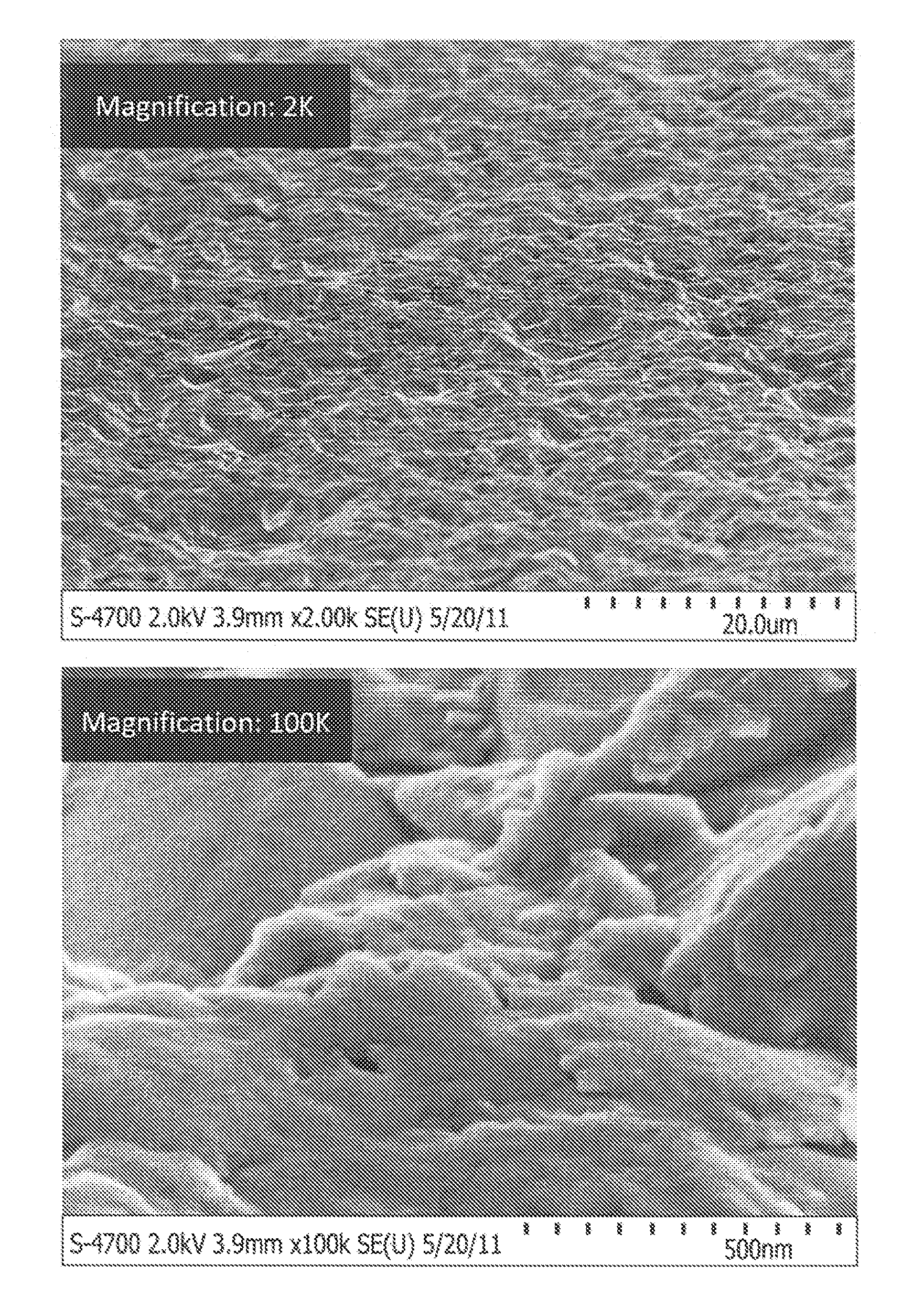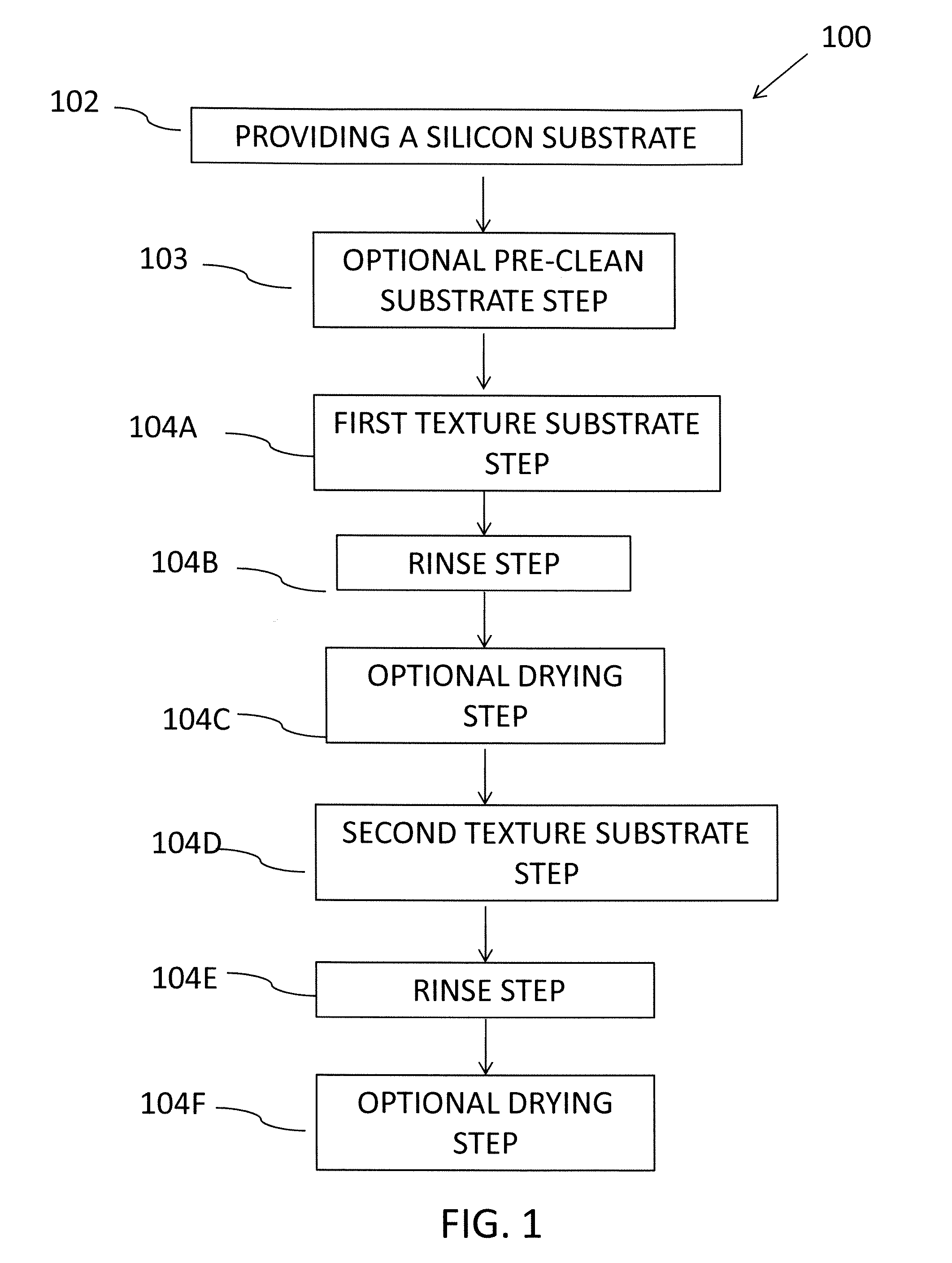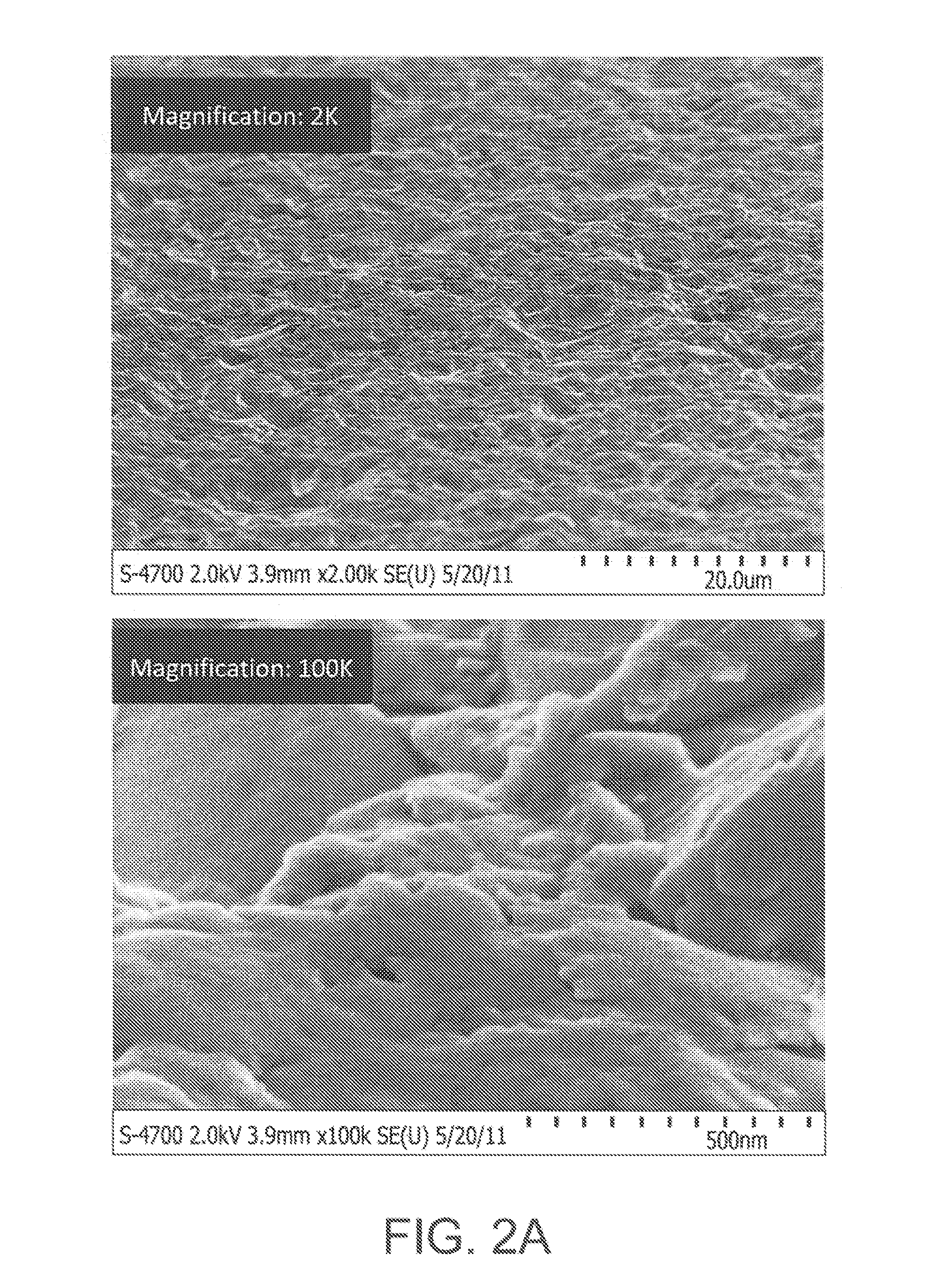Compositions and Methods for Texturing of Silicon Wafers
a technology of silicon wafers and compositions, applied in the field of texturing of the surface of silicon wafers, can solve the problems of low surface reflectivity, achieve the effects of reducing reflectivity, improving texturing uniformity, and reducing the reflectance of the textured surfa
- Summary
- Abstract
- Description
- Claims
- Application Information
AI Technical Summary
Benefits of technology
Problems solved by technology
Method used
Image
Examples
example 1
[0053]In this example, mono and multi-crystalline wafers (identified in the tables below were treated by a 2-step texturing process (with additional rinse and drying steps; however there were no saw damage nor other pre-treatment steps, e.g. no pre-clean steps)). The first texturing step entailed wetting by horizontally submerging each wafer into the first texturing composition identified in the tables below (Tables 1, 1A, 2, 2A, 3, 3A, 4, 4A, 5, 6 and 6A) for from about 1-3 min at 7-10° C., and then rinsing with deionized water (DIW) and nitrogen drying, followed by the second texturing step, of wetting by vertically submerging each treated wafer into a 0.5% to 5% by weight KOH aqueous solution (for nanopore removal) for 10 sec to 1 min at ambient temperature, and then rinsing each wafer with DIW and nitrogen drying the wafer. Silicon loses on both sides were determined based on weight changes. Reflectance was measured on each of the wafers, on the side of the wafer facing the bott...
example 2
[0058]Texturing composition Example F (Ex F) defined in Table 2A was used in the same 2 texturing steps process (with rinse and drying steps) as used in Example 1 and reported in Table 2 using different wafers from different wafer sources. The results are reported in Table 5.
TABLE 5WaferTTimeSi loss*WARsources(° C.)(min)μm400-1100 nm %wafer typesSource 17-81.56.1822.33%mono-Si7-81.54.4922.91%multi-SiSource 27-81.56.0223.41%mono-Si7-81.55.3722.20%multi-SiSource 37-81.54.2721.43%multi-SiSource 47-81.54.3323.68%multi-SiSource 57-81.54.4323.51%multi-Si*As described for Example 1, average-weighted reflectances were measured after step 104 F. (after wetting each wafer with 0.5 wt % KOH aqueous texturing solution at ambient temperature for 1 min).
example 3
[0059]Additional texturing compositions were tested in the same process described in Example 1. The results are reported in Table 6 (Note, three earlier examples are repeated in Table 6). Compositional information can be found for Comparative Ex 1 and Ex A in Table 1A and Comparative Ex II and Ex F in Table 2A.)
TABLE 6TexturingTTimeSi loss*WAR 400-waferCompositionsSurfactant(° C.)(min)μm1100 nm %typesComparativeNone7-813.9932.76%multi-SiEx IEx AHostapur ® SAS7-825.6225.15%multi-Si(10%)Ex O**Calfax ®DBA70 (10%)7-825.4725.24%multi-SiEx P***AEROSOL ®NPES -7-824.8022.09%multi-Si3030 P (30%)ComparativeNone7-815.4229.57%multi-SiEx IIEx FHostapur SAS (10%)7-81.56.1822.33%mono-SiEx QCalfax: DBA70 (10%)7-81.54.2523.57%multi-Si*As described for Example 1, average-weighted reflectance was measured after wetting each wafer with 0.5 wt % KOH aqueous texturing solution at ambient temperature for 1 min.**Calfax ®DBA70 (10%) is C12 (branched) diphenyl oxide disulfonic acid manufactured by Pilot Che...
PUM
| Property | Measurement | Unit |
|---|---|---|
| heights | aaaaa | aaaaa |
| depth | aaaaa | aaaaa |
| wt % | aaaaa | aaaaa |
Abstract
Description
Claims
Application Information
 Login to View More
Login to View More - R&D
- Intellectual Property
- Life Sciences
- Materials
- Tech Scout
- Unparalleled Data Quality
- Higher Quality Content
- 60% Fewer Hallucinations
Browse by: Latest US Patents, China's latest patents, Technical Efficacy Thesaurus, Application Domain, Technology Topic, Popular Technical Reports.
© 2025 PatSnap. All rights reserved.Legal|Privacy policy|Modern Slavery Act Transparency Statement|Sitemap|About US| Contact US: help@patsnap.com



